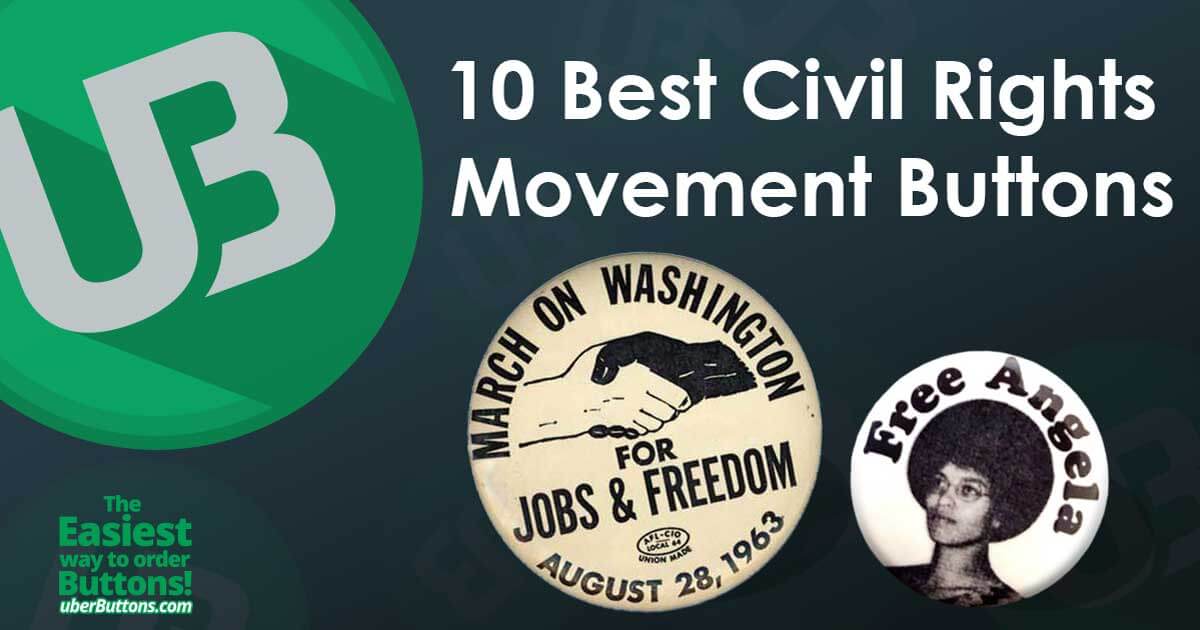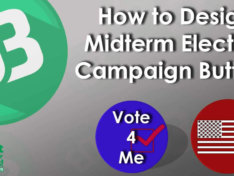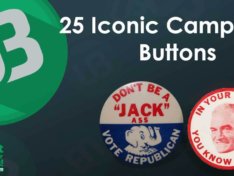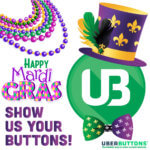In honor of Black History Month, we are showcasing 10 important protest buttons from the 1960s Civil Rights movement. These buttons served as vehicles for the protester’s anger, frustration and ultimate goal of equality.
1. We Shall Overcome
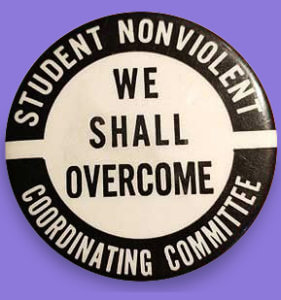
Taken from the gospel song of the same name, this slogan was the anthem for the 1960s Civil Rights Movement. Protesters could be heard chanting and singing this song during marches and demonstrations all over the country.
The song was adapted from a biblical hymn, “Ye shall overcome if ye faint not” from Galatians 6:9.
The song was a common negro spiritual. Originally written by Reverend Charles Albert Tindley, musicians like Joan Baez and Pete Seeger popularized the song for the Civil Rights Movement, until it became almost ubiquitous.
2. Black Panther Party – Panther Power
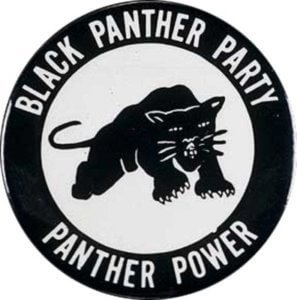
The Black Panther Party was a revolutionary party adhering to the tenets of socialism which arose in the 1960s. This party was created in retaliation to the police brutality that so many people of color faced in their communities; directly, faced in Oakland, California, where the party was founded.
Panthers wore black leather jackets, their hair in natural styles or afros and were generally very young. The Party relied heavily on the youth movement of the age.
The Party’s goal was to arm citizens and allow them to protect themselves. Lead by Huey Newton, who was later killed, the Panthers left behind a legacy of social programs, like The Free Breakfast Program, Free Health Clinics, The Intercommunal Youth Institute and The People’s Free Ambulance Service.
This button could be seen in cities like Oakland, Seattle, New York, Chicago and Los Angeles.
3. Free All Political Prisoners
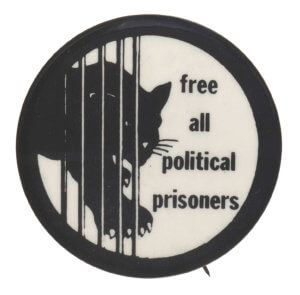
– During the Civil Rights Movement, the US Government was very fearful of The Black Panther Party, with FBI director J. Edgar Hoover even calling them, “the greatest threat to the internal security of the country.”
Using an extensive surveillance program, the FBI infiltrated the group, used police harassment and desperately tried to break up The Black Panther Party. The FBI’s infiltration contributed heavily to their ultimate demise in 1982.
In 1967, Huey Newton was arrested in the fatal shooting of a cop during a traffic stop. Newton’s arrest culminated in a rallying cry of “Free Huey” and along those lines “All Political Prisoners,” like our next subject, Angela Davis.
4. Free Angela
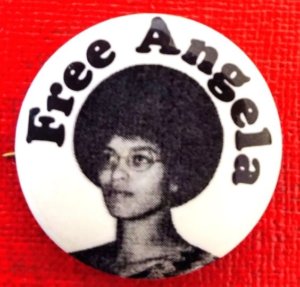
Angela Davis was a political activist during the Civil Rights Movement, whose work closely mirrored that of the Black Panther Party, although, Davis was considered much more politically radical.
She protested against the prison-industrial complex and was a member of the Communist Party USA. After taking part in the 1970 armed takeover of a California courtroom, Davis was arrested. Her work in activism made her a household name during the Civil Rights Movement.
During her incarceration, her release was highly championed by other socialist movements, eventually leading to her acquittal.
5. All Power To The People
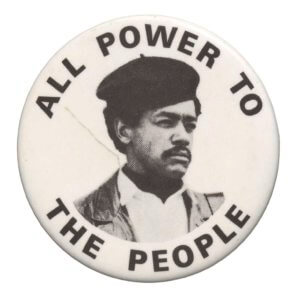
This button features a photo of Bobby Seale, a prominent Civil Rights activist and co-founder of The Black Panther Party along with another party slogan.
The Civil Rights Movement relied completely on the dedication of the individual, whether it was a sit-in or an organized boycott of a certain business, without the people’s power, equality wouldn’t exist today.
People like Huey Newton and Bobby Seale were heroes to the Black community because of the strides they made against inequality.
6. Say It Loud – I’m Black And I’m Proud
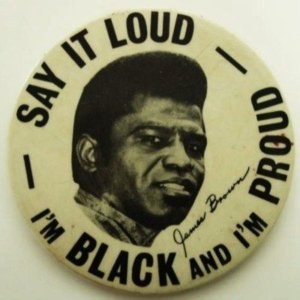
James Brown, a very prominent African American performer, was heavily involved with the Civil Rights Movement.
During this time, being African American was not looked at by the mainstream, as something to be proud of; they couldn’t go to the same restaurants, stores or parks as whites could, and they were heavily preyed upon by the police. Bring African American in the 1950s and 60s meant being less than a person.
So, the slogan “Black and Proud” was a radical notion of love and acceptance and African American performers used their platforms to uphold and disseminate that notion, which paved the way for the rights enjoyed today.
7. There’s A Change Gonna Come

Sam Cooke, a prominent gospel musician, wrote: “A Change Is Gonna Come” after being turned away from a Holiday Inn in Shreveport, Louisiana. He was fresh off his successful cross-over from gospel music into the white mainstream music scene making this song a huge risk for him.
It directly addressed the racial inequality in the country, and could have alienated his new fanbase, but ended up launching his career and cementing “A Change Is Gonna Come” into the Civil Rights lexicon.
8. March On Washington For Jobs & Freedom
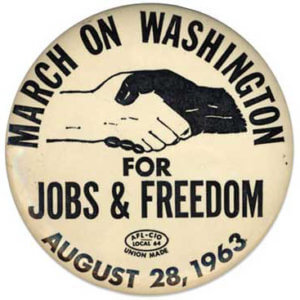
This button commemorates the iconic 1963 March On Washington in which Dr. Martin Luther King Jr. gave his “I Have A Dream” speech. Over 250,000 people occupied the Lincoln Memorial in protest of racial inequality.
The design consisting of a handshake between a white hand and a Black hand is illustrative of the message of coexistence that protesters were striving for in 1963. The March on Washington is widely considered to be the turning point in the Civil Rights Movement, and the catalyst that passed the Civil Rights Act of 1964 and the Voting Rights Act of 1965.
9. Stop Lynching
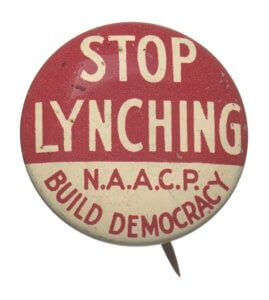
This button from the N.A.A.C.P or the National Association for the Advancement of Colored People calls for the end to the genocidal process of “lynching,” and lynch mobs. Lynching was the act of extrajudicial killing of African Americans by white mobs, usually by hanging. These lynchings took place all over the south and western states of the United States, with impunity.
The most widely publicized case of lynching was that of Emmett Till in 1955. 14-year-old Till was visiting family in Mississippi when he was beaten and shot by a mob after allegedly whistling at a white woman.
Till’s mother, who lived in Chicago, held an open casket funeral for her son and called on the press to cover his death. Jet Magazine published a photo of Till’s mangled corpse in his casket which sparked outrage and energized the burgeoning Civil Rights Movement.
In 2017, the woman who accused Till of whistling at her admitted that she lied.
10. I’m A White Agitator
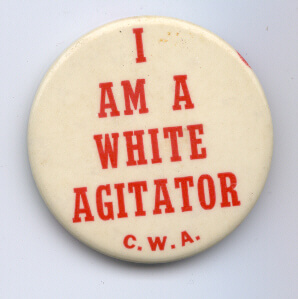
Not unlike today’s “Nasty Women,” this button turns a seeming insult and repurposes it. This button was created by the Congress Of Racial Equality or CORE, after a prominent segregationist claimed that Blacks were being stirred up by “White Agitators.”
The C.W.A stands for Congress of White Agitators. White activists who marched alongside Black activists during the March on Washington wore this pin.
Campaign buttons have been used as far back as 1789 during George Washington’s first presidential campaign, where his followers wore slogans to show their support for the first president of the United States. To this day political and protest slogans are on everything from t-shirts to baseball caps. It seems that campaign buttons aren’t going anywhere fast.

